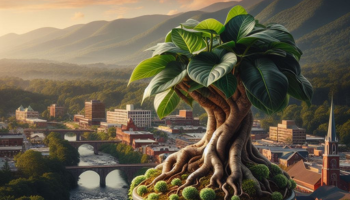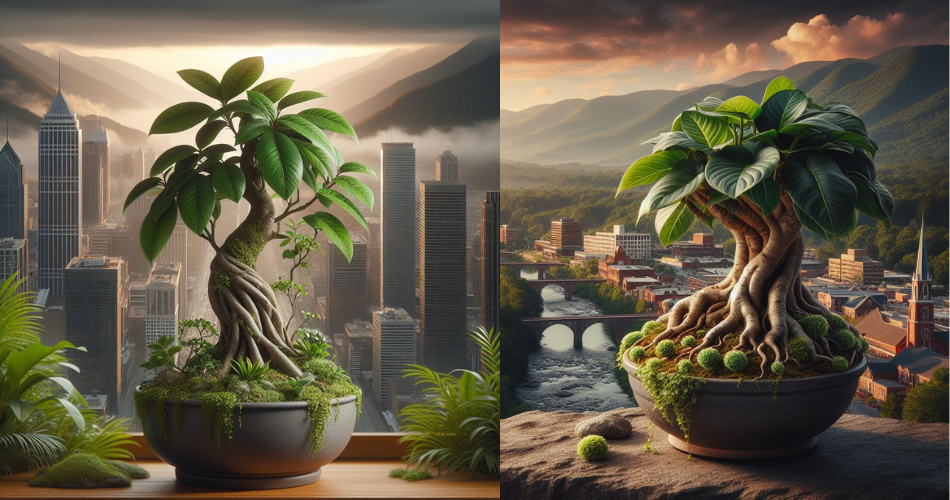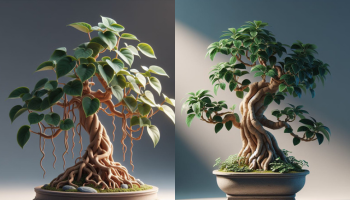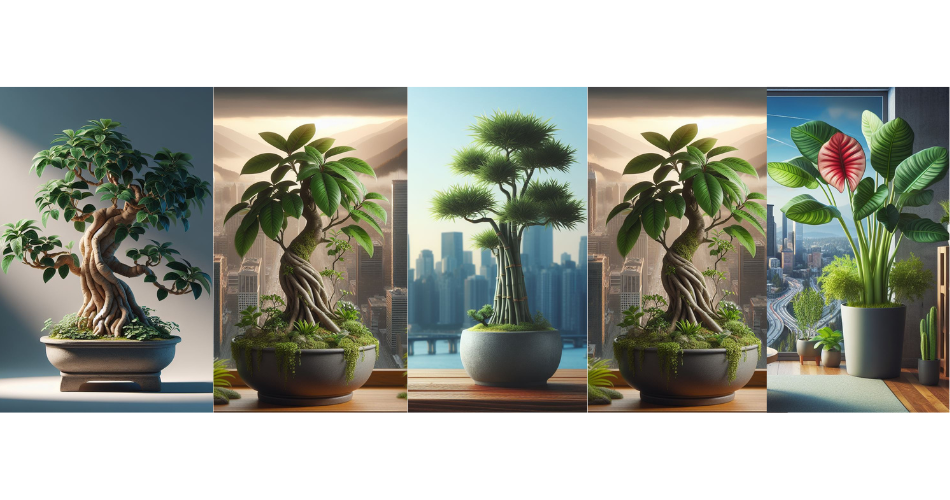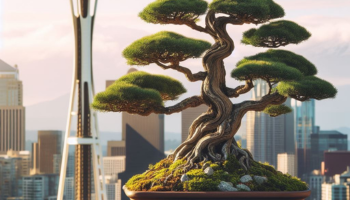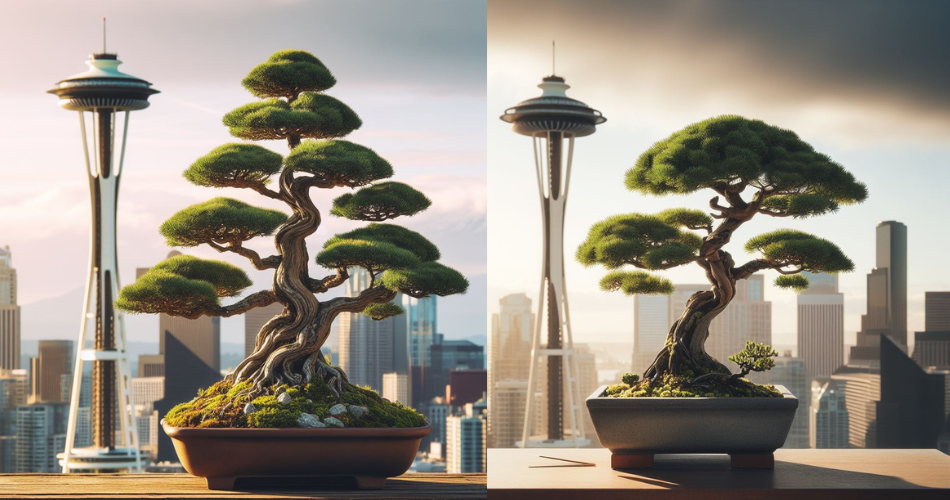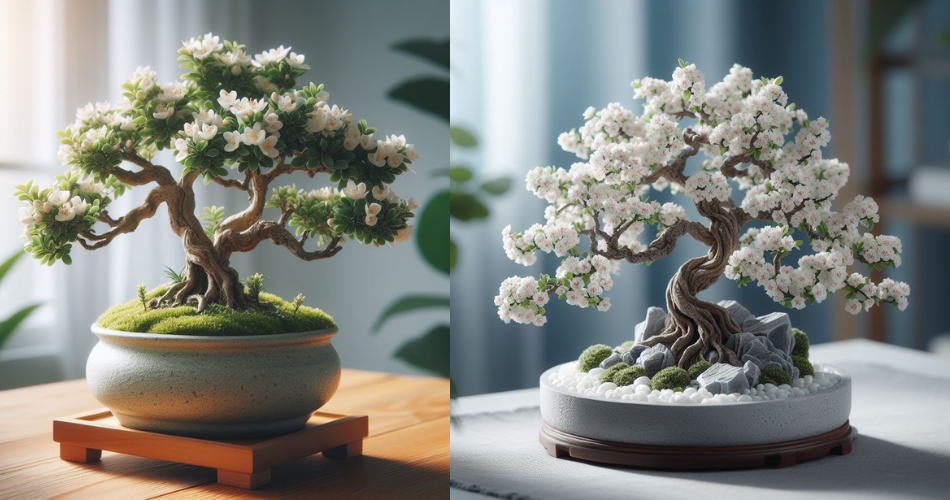
Serissa Bonsai, also known as Snow Rose, is a captivating and delicate bonsai tree species that has captured the hearts of bonsai enthusiasts worldwide. With its small, white, star-shaped flowers and fine foliage, Serissa Bonsai offers a unique beauty that can bring tranquility and elegance to any space. However, caring for this miniature tree requires a deep understanding of its specific needs and preferences. In this comprehensive care guide, we will explore the essential aspects of Serissa Bonsai care, providing detailed tips and insights to help you nurture and maintain the health and vitality of your Serissa Bonsai tree. Whether you are a beginner or an experienced bonsai enthusiast, this guide will serve as a valuable resource on your journey to creating a thriving Serissa Bonsai masterpiece.
1.1 What is Serissa Bonsai (Snow Rose)?
Serissa bonsai, also known as Snow Rose, is a delicate and captivating plant that captures the hearts of bonsai enthusiasts worldwide. With its small leaves, beautiful white flowers, and intricate trunk structure, Serissa bonsai is a favorite among bonsai lovers.
1.2 History and Origins
Originating from Southeast Asia, Serissa bonsai has a rich history that spans over centuries. It has been cultivated in China and Japan for hundreds of years, where it is highly valued for its aesthetic appeal and artistic expression. Today, Serissa bonsai can be found in various parts of the world, bringing beauty and tranquility to many homes and gardens.
2. Understanding the Care Needs of Serissa Bonsai
2.1 Light Requirements
Just like any other plant, Serissa bonsai relies on proper lighting conditions to thrive. It prefers bright, indirect sunlight, making it a great fit for a sunny window sill or a well-lit spot in your garden. However, be cautious of excessive exposure to intense afternoon sun, as it can scorch the delicate leaves.
2.2 Temperature Considerations
Serissa bonsai enjoys a temperate climate and is sensitive to extreme temperatures. It thrives best in a range of 60-75°F (15-24°C), making it suitable for both indoor and outdoor environments. During winter, protect your Serissa bonsai from frost and keep it in a sheltered area to prevent damage.
2.3 Importance of Proper Air Circulation
Adequate air circulation is crucial for the health of your Serissa bonsai. Stagnant air can lead to mold growth and other issues. You can promote air circulation by placing your bonsai in an area with good ventilation or using a small fan to gently move the air around.
3. Choosing the Right Environment for Serissa Bonsai
3.1 Indoor vs. Outdoor Placement
When it comes to deciding whether to keep your Serissa bonsai indoors or outdoors, it’s all about finding the right balance. Serissa bonsai can thrive indoors, but they also benefit from spending time outdoors during the warmer months. Regularly alternating between indoor and outdoor environments can promote healthy growth.
3.2 Ideal Placement Conditions
Whether indoors or outdoors, Serissa bonsai prefers a spot with ample natural light. Avoid placing it near drafts or heat sources, as it can adversely affect its health. If you opt for indoor placement, consider using grow lights to supplement natural light and provide the necessary brightness it needs.
3.3 Protection from Extreme Weather
While Serissa bonsai can tolerate mild weather fluctuations, it’s important to protect it from extreme weather conditions. During hot summer days or cold winter nights, provide shade or move your bonsai to a more suitable location to shield it from harsh elements.
4. Watering and Humidity Requirements for Serissa Bonsai
4.1 Watering Frequency and Techniques
Proper watering is crucial for maintaining the health of your Serissa bonsai. It’s important to keep the soil evenly moist but not waterlogged. Check the moisture level by inserting your finger about an inch into the soil; if it feels dry, it’s time to water. Remember, consistency is key!
4.2 Balancing Moisture Levels
Finding the right balance between not too dry and not too wet is essential for Serissa bonsai. It’s better to slightly underwater than overwater, as excessive moisture can lead to root rot. Use a well-draining bonsai soil mix to ensure proper water drainage and avoid water stagnation.
4.3 Humidity Considerations
Serissa bonsai appreciates a humid environment, but excessively dry or humid conditions can cause problems. You can increase humidity by placing the bonsai on a humidity tray filled with water or misting the leaves occasionally. Just don’t go overboard, as excessive humidity can invite pests to join the bonsai party.
Now that you have a better understanding of Serissa bonsai care, it’s time to put your knowledge into practice. With a little patience and TLC, your Serissa bonsai will reward you with its timeless beauty and captivating charm. Happy bonsai-ing!
5. Pruning and Shaping Techniques for Serissa Bonsai
5.1 Importance of Pruning
Pruning is like giving your Serissa bonsai a fancy haircut, but with a purpose. It helps maintain the shape and size of your bonsai and encourages new growth. Plus, it’s a great way to unleash your inner creativity. Who knew plant haircuts could be so important?
5.2 Pruning Tools and Techniques
You might think that pruning a bonsai requires a magical, ancient tool passed down from bonsai masters. But fear not, regular gardening tools will do just fine. Just make sure they’re clean and sharp. And remember, snip with care and precision. You don’t want to accidentally create a bonsai mullet.
5.3 Shaping and Wiring
Shaping your Serissa bonsai is like guiding its growth in the direction you desire. Wiring is like adding some bonsai bling to hold branches in place while they develop. Just remember to move the wires occasionally, or else your bonsai might end up with those dreaded wire marks. Nobody wants their bonsai rocking the metal accessories look.
6. Fertilizing and Soil Requirements for Serissa Bonsai
6.1 Choosing the Right Fertilizer
Finding the perfect fertilizer for your Serissa bonsai can feel like searching for a needle in a haystack. But fear not, there are many bonsai-specific fertilizers out there. Just make sure to follow the instructions and avoid overfeeding. No one wants a bonsai with a food baby.
6.2 Understanding Soil Mixtures
Soil mixtures for bonsai can be as confusing as trying to solve a Rubik’s Cube blindfolded. But don’t worry, it’s not as complicated as it seems. The key is finding a well-draining soil mixture that retains enough moisture without drowning your bonsai. It’s all about balance, just like in life.
6.3 Fertilizing Schedule and Techniques
To fertilize or not to fertilize, that is the question. And the answer is yes, but in moderation. Too much fertilizer can be harmful to your bonsai’s health. So, follow a fertilizing schedule recommended for Serissa bonsai, and your little green friend will thank you with lush foliage and vibrant flowers.
7. Common Pests and Diseases of Serissa Bonsai
7.1 Identifying and Preventing Pests
Nobody likes uninvited guests, especially when they come in the form of pests on your Serissa bonsai. Look out for pesky critters like aphids, spider mites, and mealybugs. Keep a close eye on your bonsai, and if you spot any unwanted visitors, take action swiftly. A good old-fashioned spray bottle can work wonders.
7.2 Common Diseases and Their Treatment
Just like humans, bonsai trees can also fall ill. Some common diseases for Serissa bonsai include root rot and powdery mildew. Catching these diseases early is key, so regularly inspect your bonsai for any signs of trouble. And remember, prevention is better than cure, so ensure your bonsai has good airflow and avoid overwatering.
8. Tips and Tricks for Successful Serissa Bonsai Care
8.1 Maintaining a Balanced Environment
Serissa bonsai thrive in a balanced environment, just like we do. Make sure your bonsai gets the right amount of sunlight, water, and humidity. Think of it as creating a cozy and inviting atmosphere for your little green friend. A bonsai spa day, if you will.
8.2 Seasonal Considerations
Seasons change, and so do the needs of your Serissa bonsai. Adjust your care routine accordingly, whether it’s protecting your bonsai from frost in winter or providing shade during hot summer days. Pay attention to the cues nature gives you, and your bonsai will be happier than a beach bum on vacation.
8.3 Troubleshooting Common Issues
No matter how green-thumbed you are, sometimes things just don’t go as planned. But don’t fret! If your Serissa bonsai is looking sad or throwing tantrums, there’s usually a solution. From yellowing leaves to drooping branches, a little research and some TLC can often solve the problem. And remember, even bonsai experts have bad hair days. It’s all part of the journey.In conclusion, Serissa Bonsai, with its delicate beauty and intricate care requirements, is a rewarding and fulfilling bonsai tree to cultivate. By understanding its specific needs for light, temperature, watering, pruning, fertilizing, and protection against pests and diseases, you can create an ideal environment for your Serissa Bonsai to thrive. Remember to approach its care with patience, attention to detail, and a willingness to learn from the tree itself. With the knowledge and tips provided in this guide, you are equipped to embark on a successful journey in caring for your Serissa Bonsai, creating a stunning and harmonious addition to your home or garden. Happy bonsai cultivation!
FAQ
1. Is Serissa Bonsai suitable for beginners?
Serissa Bonsai can be a bit challenging for beginners due to its specific care requirements. However, with proper research, patience, and attention to detail, beginners can successfully care for Serissa Bonsai. It is essential to understand the tree’s needs and provide the right environment, watering schedule, and pruning techniques to ensure its health and vitality.
2. Can Serissa Bonsai be kept indoors?
Yes, Serissa Bonsai can be kept indoors. However, it requires adequate light, humidity, and air circulation. Placing the bonsai near a bright window or providing supplemental grow lights can help meet its light requirements. Additionally, regularly misting the foliage and using humidity trays can help maintain the necessary humidity levels for indoor cultivation.
3. How often should I fertilize my Serissa Bonsai?
Serissa Bonsai benefits from regular fertilization during the growing season, typically from spring to early fall. It is recommended to use a balanced, slow-release bonsai fertilizer or a liquid fertilizer diluted to half strength. Apply the fertilizer according to the package instructions, ensuring not to over-fertilize, as it can lead to root burn and other issues. Adjust the fertilization frequency based on the tree’s growth and health.
4. What should I do if my Serissa Bonsai develops pests or diseases?
If your Serissa Bonsai develops pests or diseases, it is important to identify the issue promptly and take appropriate action. Common pests that can affect Serissa Bonsai include aphids, spider mites, and scale insects. Treat the infestation by using insecticidal sprays or natural remedies, ensuring thorough coverage of the affected areas. In the case of diseases, such as fungal infections, remove the affected parts and apply appropriate fungicides. Consulting with a local bonsai expert or horticulturist can provide specific guidance for your region and situation.


